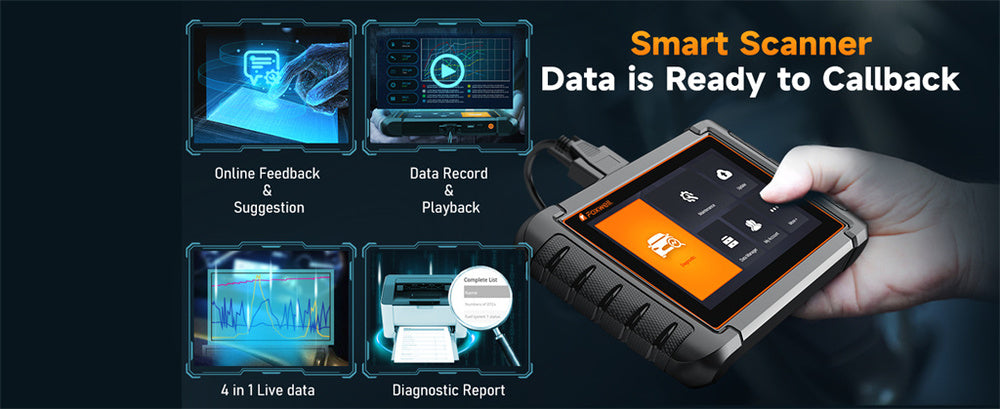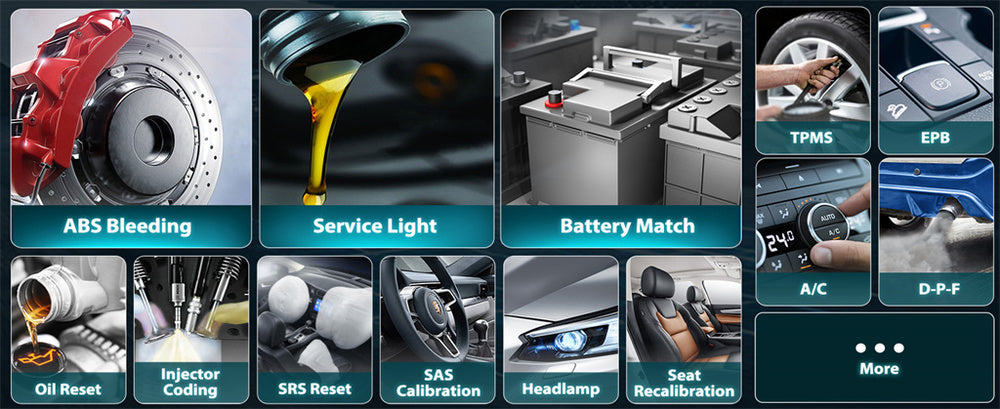Have you been curious whether your car's thermostat is working as expected and want to know whether an OBD2 scanner can assist?
In short, it can - although it does not directly tell whether the thermostat is open or closed.
However, it will provide invaluable data that helps diagnose potential issues with it - let's discuss what an engine thermostat does, how to test it, and how the Foxwell NT809 can assist in monitoring it.
What Does an Engine Thermostat Do?

An engine thermostat acts like the temperature manager of your car's engine. Its primary duty is regulating coolant flow between the engine and the radiator.
At start-up time, when engine temperatures remain cold, this valve remains closed to expedite engine warming up faster.
Once operating temperatures reach their optimal operating temperatures, it opens and allows coolant through to keep engine overheating from occurring.
An improperly functioning thermostat can create numerous issues for the engine's fuel efficiency and performance, including decreased fuel economy and performance and overheating, which may result in severe engine damage. T
herefore, it's imperative that your thermostat functions in its intended way for the best performance.
Methods to Check Your Car’s Thermostat Functionality
If your thermostat seems to be acting up, here are a few easy ways you can check its functionality:
- Visual Inspection: Start by lifting the hood and looking closely at your thermostat housing for any visible signs of trouble, like leaks or cracks.
While this won't tell you whether or not the thermostat is open or closed, it can help identify other related issues.
- Boiling Water Test: If you are comfortable performing manual labor, remove your thermostat and place it in boiling water.
A properly functioning thermostat should open when exposed to hot water; otherwise, it is likely faulty and should be replaced.
- Maintain Engine Temperature: Be mindful of your car's temperature gauge while driving.
If its reading remains low and engine warm-up seems slow, it indicates that its thermostat might be open.
Conversely, if its reading jumps too high, it could indicate its closure or vice versa.
OBD2 Scanners Can Monitor Engine Temperature
An OBD2 scanner such as the Foxwell NT809 can be invaluable when monitoring engine temperature.
While it won't tell you directly whether your thermostat is open, real-time data provides insight into what's happening within your engine.
The Foxwell NT809 is an advanced diagnostic tool capable of more than just reading trouble codes.
One of its unique capabilities is monitoring live data streams such as engine coolant temperature (ECT).
Simply by plugging it into your car's OBD2 port, the Foxwell NT809 lets you observe how engine temperatures change as you drive.
If a thermostat is stuck open, for instance, its real-time data could indicate that engine warming up takes longer than usual and temperatures remain lower than anticipated.
On the other hand, if it's closed too tightly, it could show a rapid engine temperature rise and the risk of overheating—providing you with real-time information to help make more informed decisions about whether your thermostat requires attention or adjustment.
Foxwell NT809 features an intuitive, user-friendly interface that enables easy navigation through various functions and the generation of detailed diagnostic reports.
This makes it an excellent tool not only for DIY enthusiasts but also for professionals needing to diagnose and resolve issues efficiently.
Standard OBD2 Codes Related to Thermostat Issues
Your OBD2 scanner might also show specific diagnostic trouble codes (DTCs) that indicate an issue with the thermostat. Here are a few that may appear:
- P0128: This code indicates your engine has not reached the proper operating temperature due to a failed open thermostat.
- P0597: This error code denotes an issue with the thermostat heater control circuit/open, suggesting a possible malfunction of its electronic controls or potential malfunction of its thermostat itself.
If either of the codes appear, examining your thermostat and associated components would be prudent.
Steps to Fix a Faulty Thermostat

Have you identified your thermostat as being problematic? No worries--it can be resolved. Here is a step-by-step guide that can assist with this process:
- Gather Your Tools: Before getting started, gather a basic toolkit, including wrenches, a drain pan, a thermostat replacement kit, and coolant.
- Before You Begin: First and foremost, safely drain the coolant from your radiator into a drain pan to avoid spillage when removing the thermostat. This step is essential.
- Remove the Old Thermostat: Locate and open up the thermostat housing (typically near the top of your engine).
- Install the New Thermostat: Place the new thermostat into the housing, ensuring it’s seated properly, and reattach the housing with the bolts.
- Refill the Coolant: Refill the coolant, making sure to bleed the system afterward. This step is crucial to eliminate any air pockets that could cause overheating.
- Test Your Work: Start the engine and let it warm up. Keep an eye on the temperature gauge to ensure the new thermostat is functioning correctly.
Conclusion
While an OBD2 scanner such as the Foxwell NT809 may not provide direct evidence that your thermostat is open or closed, it can provide invaluable insights into your engine's temperature behavior.
By monitoring real-time data and understanding any codes the scanner generates, you can detect issues early and take measures to rectify them before they lead to more significant issues.
With the right tools and an understanding of engine cooling system maintenance, you're well on your way!
FAQs
Will a code reader detect a bad thermostat?
A code reader can detect issues related to a bad thermostat by identifying specific trouble codes, such as P0128 or P0597, which indicate problems with the thermostat or the engine's temperature regulation.
How to tell if a thermostat is open or closed?
While an OBD2 scanner won't directly tell you if the thermostat is open or closed, you can infer its state by monitoring the engine's temperature data. If the engine takes too long to warm up, the thermostat might be stuck open. If the engine overheats quickly, it could be stuck closed.
How to test if a thermostat is stuck open?
You can test if a thermostat is stuck open by using an OBD2 scanner to monitor the engine coolant temperature. If the engine stays cooler than normal for an extended period, it's a sign the thermostat may be stuck open. Alternatively, you can remove the thermostat and perform a boiling water test to see if it opens properly.




Leave a comment
This site is protected by hCaptcha and the hCaptcha Privacy Policy and Terms of Service apply.